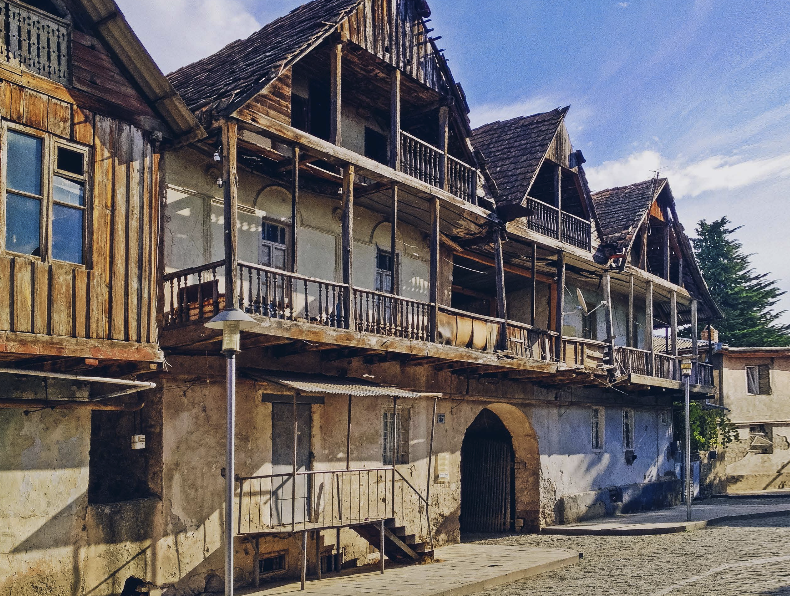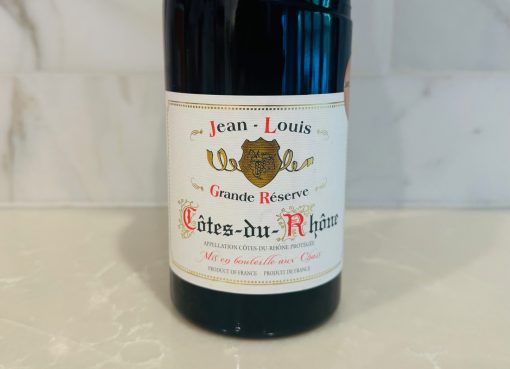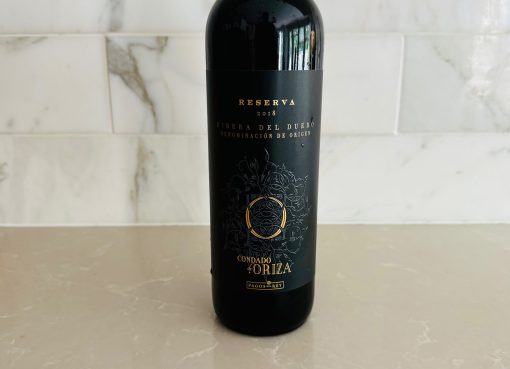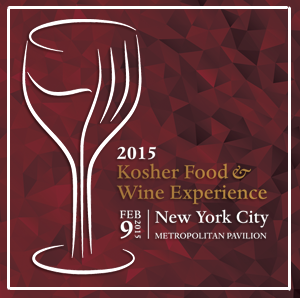Barbale of Bolnisi: Excellent Wines from Georgia’s Indigenous Grape Varieties

Barbale is a relatively new producer founded in Bolnisi, a former German colony in the Kvemo Kartli region of Georgia. German immigrants arrived in Bolnisi (then called Katarinenfeld in honor of the Tsar’s sister) in 1818 and started planting vineyards and making wine. They were successful and thrived until 1941 when Stalin deported families of German origin to Siberia. In recent years, viticulture and winemaking have experienced a revival in Bolnisi, and in 2014 enologist Berdia Berdiashvili (shown below) and Timur Khavanshanov founded Barbale there. With limestone soils and varied exposures and elevations, Bolnisi shows promise as a quality wine region, in the opinion of Lisa Granik, author of The Wines of Georgia.
Barbale specializes in organic wines made from indigenous grapes of Kartli and Kakheti. The winery is named after the goddess of fertility in Georgian mythology. I first tasted Barbale wines at Zest, a small, artisanal restaurant in Tbilisi; my reviews can be found in the recently published IWR report, Georgia: The Wines of Kakheti and Kartli. Later, back in in Washington DC, I discovered that Kirk Parsons imports their wines. He kindly provided samples of additional wines I had not yet tasted. US Importer: Parsons Fine Imports
The Wines
Barbale 2022 Khikhvi Exceptional Harvest Kartli 91 Pale amber. Scents of baking spice and skins of stone fruit. Creamy texture with very good acidity, gentle tannins, and a very long finish. Nicely balanced but not assertively flavored so will pair with a wide variety of dishes. Fermented 100{83994d7454f8ce68441ea8152244c292227c3db19076e7622c8f5ff92141c35a} on skins for 30 days and aged in qvevri for 11+ months. Sourced from mountain slopes in Kvareli in Kakheti province; Khikhvi is an early ripening variety that does best in cooler sites. Historically one of Georgia’s best white grape varieties, but it has low yields, so plantings declined during Soviet times.
Barbale 2020 Budeshuri Exceptional Harvest Shida Kartli ($30) 93 Semi opaque. Made from the Budeshuri grape, this is a super delicious food wine. It opens with fresh aromas of blackberry, cassis and hints of licorice and violet. The mouthfeel is silky and broad with a savory meat-like character and concentrated flavors of dark cherries, blue berries and a hint of dark chocolate shavings. Sourced from a cold vineyard site at 680m above sea level. Fermented three months 100{83994d7454f8ce68441ea8152244c292227c3db19076e7622c8f5ff92141c35a} on the skins using native yeast and aged 10 months in qvevri. 14{83994d7454f8ce68441ea8152244c292227c3db19076e7622c8f5ff92141c35a} alc. Often grown as a table grape, Budeshuri was widely cultivated in pre-phylloxera times but today is relatively rare.
Barbale 2019 Mukuzani Exceptional Harvest Mukuzani ($25) 91 Medium ruby red. Aromatically complex and spicy with dark red berries, plums and herbs putting in an appearance. Smooth on entry and full-flavored, finishing long with somewhat dry tannins and rich extract. Quite easy drinking in character, a perfect wine to accompany pizza. Mukuzan is one of Georgia’s most historically famous wine regions. While originally (in the 1820s) small in size, its appellation has expanded over time in response to market pressures. Made from Saperavi grapes grown in the Mukuzan zone. Fermented on the skins in qvevri using native yeast for 60 days after which the wine is racked to oak barrels for another 12 months aging. 14{83994d7454f8ce68441ea8152244c292227c3db19076e7622c8f5ff92141c35a} alc.
Barbale 2021 Shavkapito Special Reserve Kartli ($30) 93 A bold, full flavored wine showing aromas and concentrated flavors of dark berries, chocolate and a touch of tobacco leaf. A robust, intense wine for pairing with braised meats. Sourced from 640m high vineyards in Kartli. Fermented in qvevri on the skins for 60 days followed by 10 months in used French oak. 13.5{83994d7454f8ce68441ea8152244c292227c3db19076e7622c8f5ff92141c35a} alc. While not widely grown today, Shavkapito can make elegant, medium weight wines that reflect their terroir, much like Pinot Noir.



